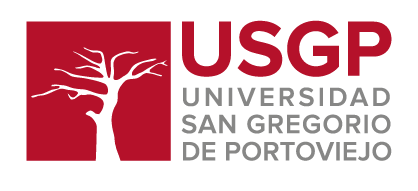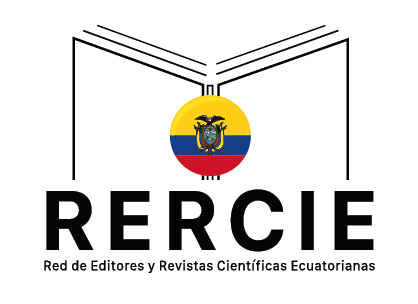The Valency Structure Of English And Tatar Verbs Of Motion In The Comparative Aspect
DOI:
https://doi.org/10.36097/rsan.v0i34.1182Palabras clave:
linguistics, valency, structure, relevance, verbs of motion, semanticsResumen
The theory of valency is one of the most important topics of modern linguistics. The valency analysis is directly related to the practice of teaching and learning languages in linguistics.
The given research is aimed at considering the valency structure of Tatar and English verbsof motion. The relevance of the topic is determined by its general theoretical significance. The comprehensive study of the valency structure of Tatar and English verbs makes a significant contribution to the study of the theory of semantic syntax of these languages. The choice of verbs of motion is also not accidental. The versatility of the semantic structure of this group of verbs takes the first place among other thematic groups.
The scientific novelty of the research is that it conducts the comparative study of valency properties and variants of Tatar and English verbs of motion. The work involves experiencing the comprehensive study of valency properties of the main lexico-semantic group of verbs: verbs of motion. Due to the fact that it is impossible to describe in detail all the lexical-semantic groups of verbs within the framework of one study, we limited ourselves to considering the main thematic group – the verbs of motion.
Citas
Ahani, S., & Pourmohammadi, M. (2019). Surveying Urban Land Use Changes with an Emphasis on Electronic City. Journal of Humanities Insights, 3(02), 61-4.
Apresyan, Yu. D. (2007). Semantic foundations of verbs. For Slavic studies. Novi Sad, 49-62.
Bazarova, L. V., & Gilyazeva, E. N. (2017). Interdisciplinary polysemy and homonymy in the field of terminological systems (on the material of English terms of medical genetics). Astra Salvensis. –Romania, 2, 407-414.
Bazarova, L.V., & Gilyazeva, E. N. (2018). Terminologization of the Tatar language (in the context of naming diseases). Modern Journal of Language Teaching Methods (MJLTM). Iran, 8(11), 205-209.
Fasihi, R., Hasanzadeh, R., & Mahmoudi, G. (2019). Attachment Style and Alexithymia Correlation among University Students. Journal of Humanities Insights, 3(02), 45-9.
Heidari, M., Ghasemi, S., & Heidari, R. (2019). The Effects of Leadership and Employment in Technical Capabilities of Sport Teams. Journal of Humanities Insights, 3(02), 75-80.
Ishtanova, R. K. (2002). Verbs of the Tatar language in the semantic aspect. Kazan, 264 p.
Katznelson, S. D. (2004). Typology of language and speech thinking. 3rd ed., Stereotyped. M: Editorpal URSS, 224 p.
Kimasi, K., Shojaei, V., & Boroumand, M. R. (2019). Investigation of Safety Conditions at Gymnasia in Different Organizations. Journal of Humanities Insights, 3(02), 70-4.
Kubryakova, E. S. (1992). Action verbs through their cognitive characteristics. Logical Analysis of Language: Action Models. M.: Nauka, 84.
Kuliev, G. K. (1992). Semantics of verbs in Turkic languages. Baku, 45 p.
Lavrentiev, A. M. (2001). The case category and linguistic typology: on the material of the Rus. lang Novosibirsk, 216 p.
Ouhpar, S. Y. M, Mondajin, M. R, & Amirkabiri, A. (2019). Study of Intellectual Capital on Employees Capabilities in Judicial Organization. Journal of Humanities Insights, 3(02), 65-9.
Queirós, A., Santos, M., Cerqueira, M., & Rocha, N. P. (2017). A Systematic Review of Literature Reporting on Studies Analysing Technologies for Ageing in Place to Support Community-Dwelling Older Adults. Journal of Information Systems Engineering & Management, 2(3), 17. https://doi.org/10.20897/jisem.201717
Rasooli, M., & Abedini, M. (2017). The Relationship between Organizational Support and Job Satisfaction of Experts and Managers of Islamic Azad University of Qeshm and Subsidiaries (International Units, Medical, Sama, Hormuz and Khamir). Dutch Journal of Finance and Management, 1(2), 42. https://doi.org/10.29333/djfm/5818
Sakaeva, L. R., Bazarova, L. V., & Gilyazeva, E. N. (2017). Polysemy and homonymy in medical terminology (based on the nosological terms of the English and Russian languages). Bulletin of the Northern (Arctic) Federal University. Ser. Humanitarian and Social Sciences, 6, 111-120.
Silnitsky, G. G. (1990). The concept of ascending and descending valency and its role in the differentiation of non-personal forms of the verb. Typology and Grammar. M., 118-125.
Yahin, M. A., Sakaeva, L. R., Bazarova, L. V., & Gilyazeva, E. N. (2017). Structural Features Of Nosological Terms In The English And Russian Languages. www. mjltm. com info@ mjltm. org, 42.
Yulikova, N. M. (1994). Locative valency of English verbs and variability of locative syntaxes. St. Petersburg. 170 p.
Descargas
Publicado
Cómo citar
Número
Sección
Licencia
 Esta obra está bajo una Licencia Creative Commons Atribución-NoComercial-SinDerivadas 4.0 Internacional (CC BY-NC-ND 4.0).
Esta obra está bajo una Licencia Creative Commons Atribución-NoComercial-SinDerivadas 4.0 Internacional (CC BY-NC-ND 4.0).
















